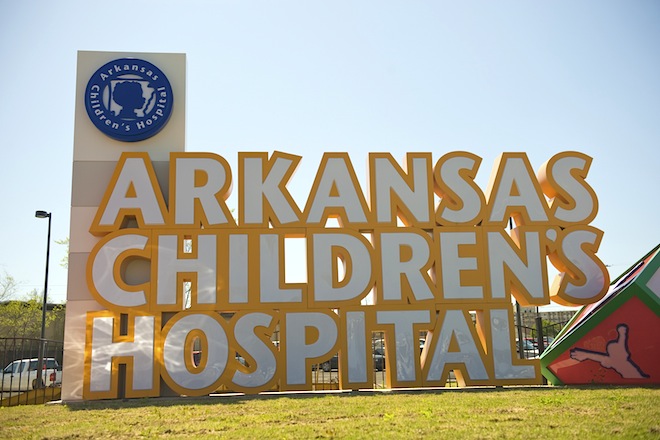
Warm weather brings the joys of summer, but also a few additional risks for active children and teens.
Athletic Trainer Bree Clayton from Arkansas Children’s Hospital stopped by THV11 This Morning with tips on how to keep them safe.
Why are young athletes at such risk for heat illness?
-Children and teens don’t get rid of heat through sweat as effectively as adults
-Young athletes often are disciplined enough to make themselves drink
-During practices and games, young athletes are easily distracted and they forget to take breaks and hydrate
Is heat illness still a worry for young athletes, even when we’ve had cooler weather like recently?
– Cooler weather recently means that young athletes are not as acclimatized to warmer temperatures
– Humidity is as important as temperature-with high humidity even temperatures in the 80’s can create dangerous a dangerous heat index
– Full sun exposure can also add as much as 15 degrees to the heat index
– Practice surface, especially artificial turf, also adds radiant heat
– Heat illness can even occur indoors if the temperature is not being controlled.
What are the signs parents/coaches should look for in their young athletes if they suspect heat illness?
– Noticeable Thirst
– Muscle Cramps
– Weakness
– Decreased Performance
– Nausea
– Headache
– Fatigue
– Lightheaded feeling or dizziness
– Difficulty paying attention
What is the best way to prevent it?
– Acclimatization-spending progressively longer times exercising outdoors is very important
– Good night’s sleep
– Well balanced diet consisting of fruits and vegetables
– Plenty of water and sports drinks
–Avoid products that contain lots of sugar and caffeine
–Absolutely no energy drinks! They can actually raise your body temperature.
– Wear as few layers as possible of light weight, moisture wicking material
– Change into dry clothes often
Will it help to wear a cooling bandana or other type of cooling towel when they are practicing in pads/helmet and playing games?
– Headbands and cooling towels are only helpful if they stay exposed to the wind.
– If they become wet and stay wet and are under shoulder pads and helmets, they are just going to trap heat in.
– Great for after practice, but probably not good to wear during practice.
What should parents ask of coaches to know that there is a plan in place to address heat illness?
– What type of rest plan does the coach have in place?
– Where can athletes go to cool off during breaks?
– How often are players allowed to drink water during practice?
– What is the school’s plan to treat an athlete that overheats?
– Does the school have an emergency action plan?
– Who monitors the athletes during practice to make sure they are not overheating?
Is water better than sports drinks for preventing heat illness or does it matter?
– Drinking compliance is the key!
– Water is better for overall hydration, but if kids do not like it they won’t drink it.
– Sports drinks have flavor so often times athletes are more likely to drink them.
What role can parents play in keeping their young athletes healthy during the heat?
– Have plenty of their favorite flavor of sports drink at home for before and after practice
– Make sure to have healthy snacks at home.
– Provide well balance meals and make sure your athlete eats-if they are tired they may not feel like, but encourage it
– Allow them to rest indoors in the air conditioning after practice
What should your first steps be if you identify heat illness in your child or another young athlete?
– If minor symptoms like dizziness, lightheadedness, or cramping:
–Rest in a cool place
–Remove wet, constricting clothes
— Give them plenty of water and sports drink
– If they collapse, lose consciousness, or become confuse this is an emergency and could be a heat stroke
–Cool them as rapidly as possible
—Ice bath is preferred method
—Ice packs over as much of body as possible
—Cold shower or ice towels
–Dial 9-1-1
–Remember to cool first and transport second
ORIGINAL ARTICLE:
http://www.thv11.com/story/news/health/2015/07/27/keeping-active-teens-children-safe-during-warm-weather/30723431/